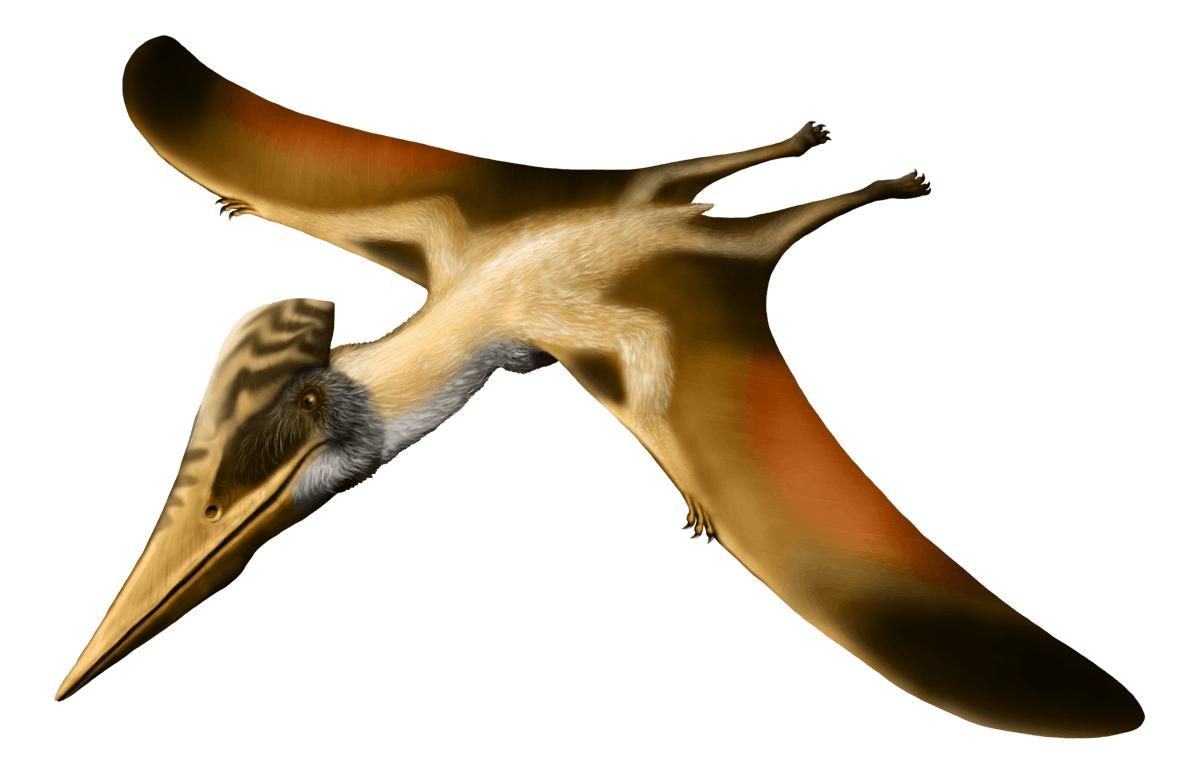Ornithostoma



Harry Govier Seeley named the pterosaur genus Ornithostoma in 1871 for a snout fragment found in the Lower Cretaceous Cambridge Greensand Formation of England. Seeley later named the species O. sedgwicki in 1891, as he didn’t give the genus a species name 20 years earlier. The name is Greek for “bird mouth” referring to its toothless bill. Over time additional pterosaur bones from the same formation have been referred to Ornithostoma, including a skull roof with the base of a crest, and various postcranial fragments.
The original specimen is a portion of the skull from the middle portion of the rostrum. This fragment is about 5 cm (2 inches) long, 2.5 cm (1 inch) tall, and 2 cm (3/4 inch) wide. Although it is missing the tip of the jaws, the fossil shows that the beak was toothless, gently tapering, and would have extended another 10 cm (4 inches). When seen from above, the jaws also gently taper toward the tip, but the rear-most part of the preserved skull appears to bulge significantly. There are low bony ridges on the lower surface of the fragment, and the entire rostrum appeared to have been covered in beak tissue.
Because the fragment was most similar to Pteranodon, known from Upper Cretaceous rocks in the central US, many paleontologists in the early 20th Century considered Pteranodon to be the same genus as Ornithostoma, with the Kansan species known as Ornithostoma longiceps. This wasn’t universally accepted however, with many pointing out that Ornithostoma lived 15-20 million years before Pteranodon, was much smaller, and had subtle anatomical differences.
The referred skull roof fragment includes part of the eye socket, the temples, and the base of a large crest extending behind the rest of the skull. Unfortunately, there are no overlapping parts between the rostrum and skull roof fragments, so it’s impossible to tell if they actually came from the same animal, and many authors have doubted their association.
Ornithostoma was long considered to be a pteranodontid because of its tapering, toothless rostrum, and head crest in the referred specimen. In 2012 Alexander Averianov redescribed Ornithostoma and concluded that it was actually an azhdarchoid bearing striking similarities to the rostra of both chaoyangopterids and azhdarchids. Averianov considered the skull roof fragment as belonging to Ornithostoma, noting that it was much more similar to tapejarids and chaoyangopterids than it is pteranodontids. Other isolated azhdarchoid bones from the Cambridge Greensand, including moderately elongate cervical vertebrae were also referred to this species by Averianov.
Without more material or definitive associations between the isolated bones referred to Ornithostoma it’s impossible to estimate its size more precisely. The Cambridge Greensand Formation was deposited under a warm shallow sea more than 100 million years ago. Ornithostoma may have fished, or hunted terrestrial prey on beaches or farther inland.


